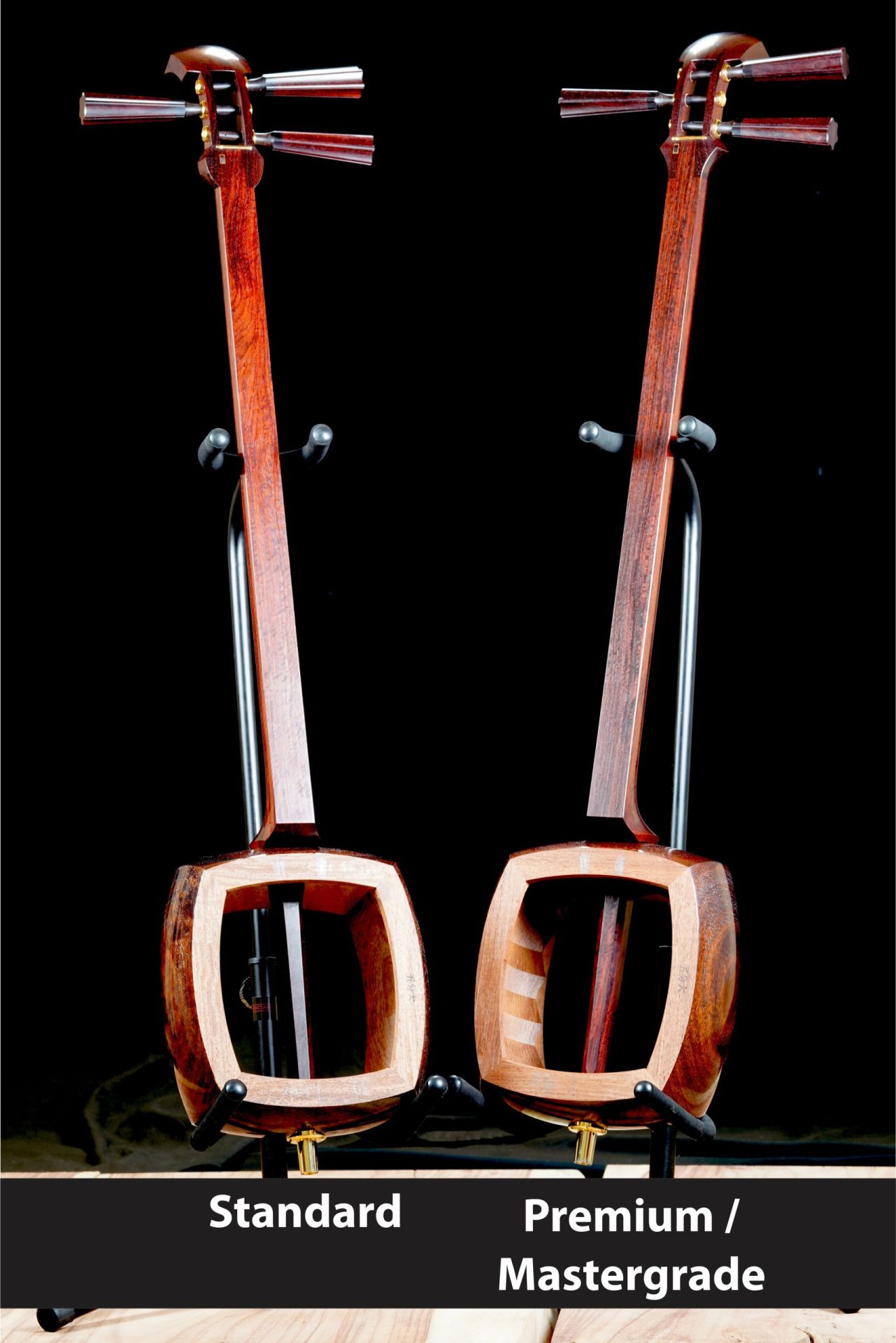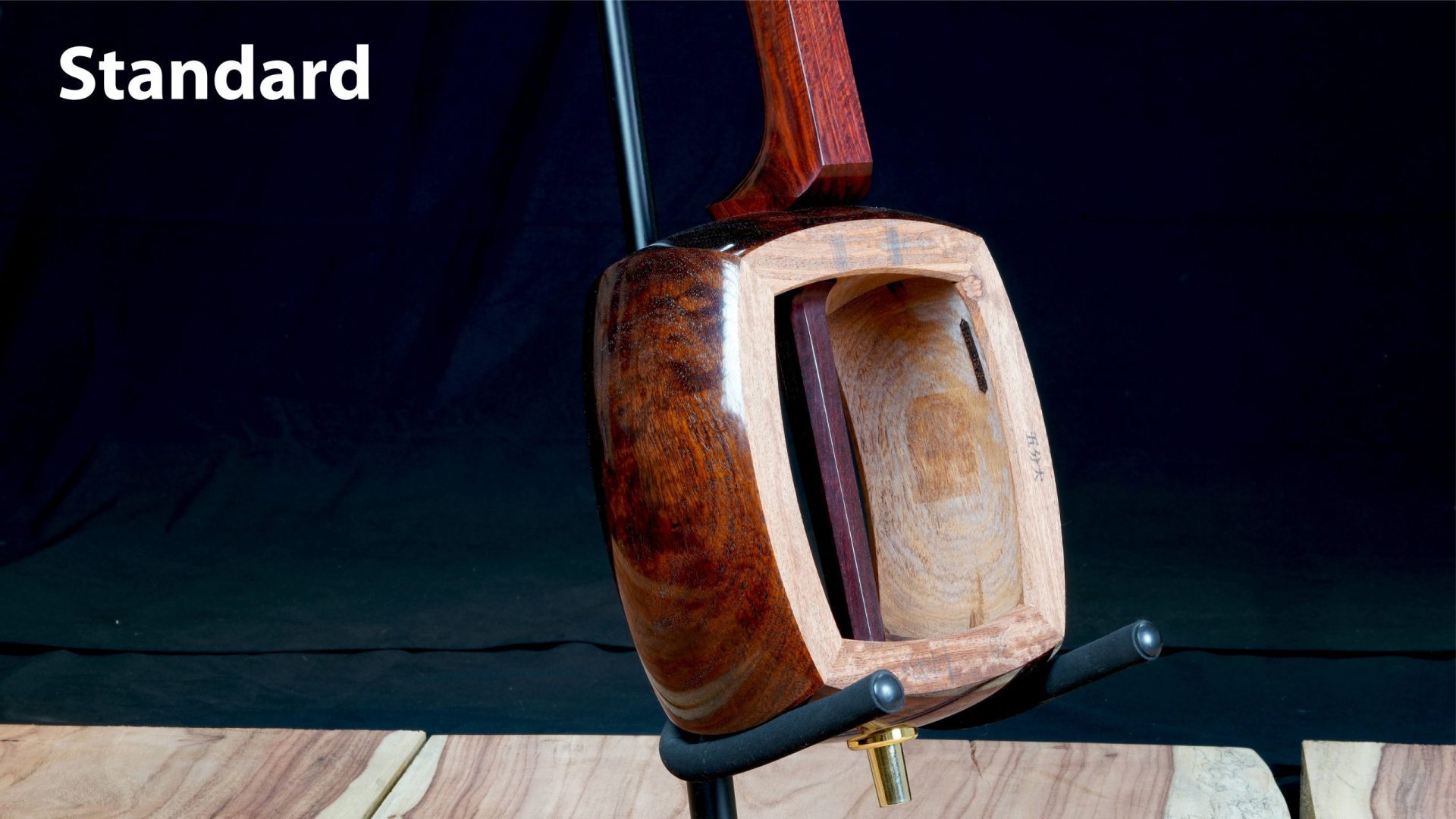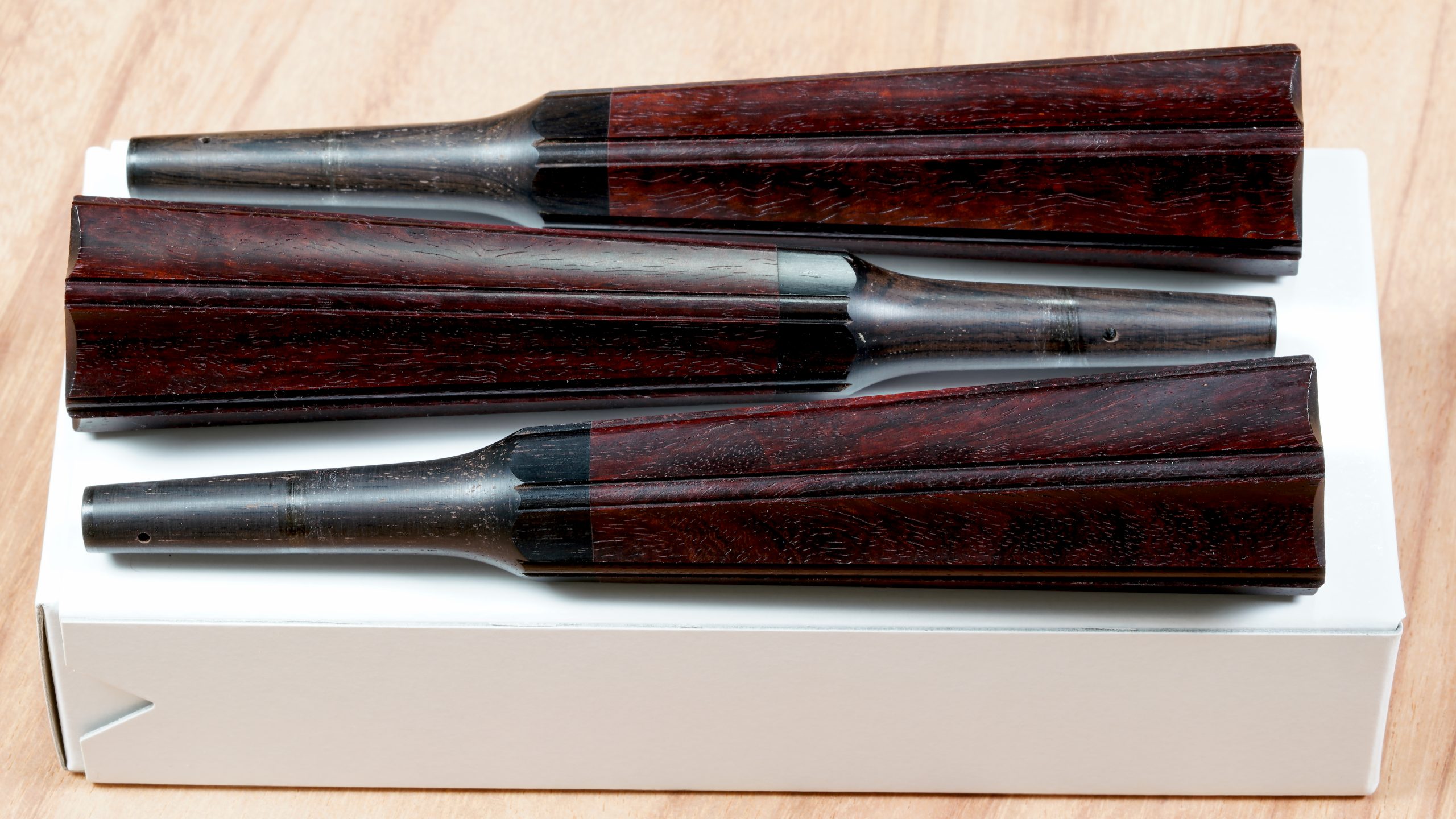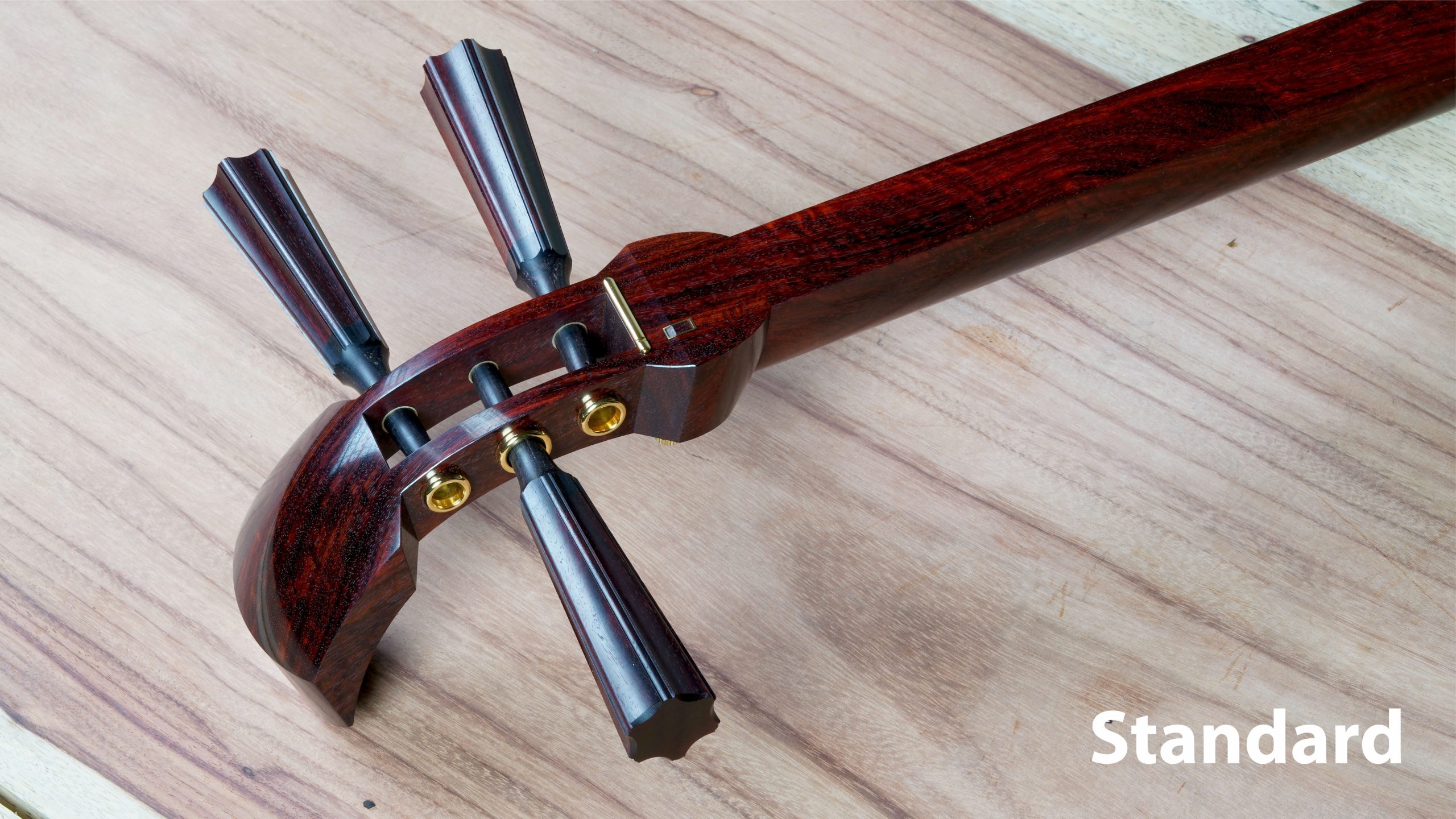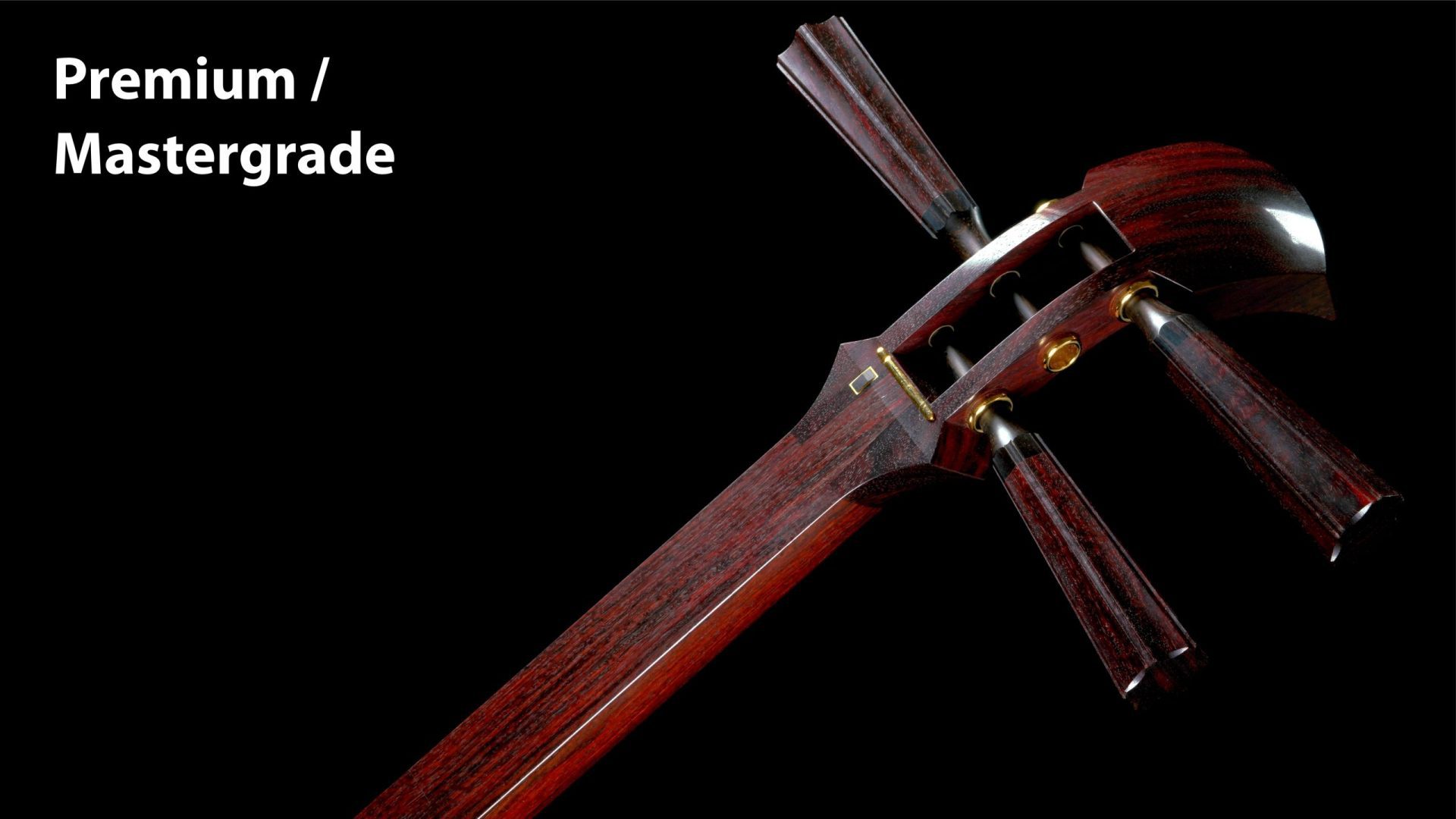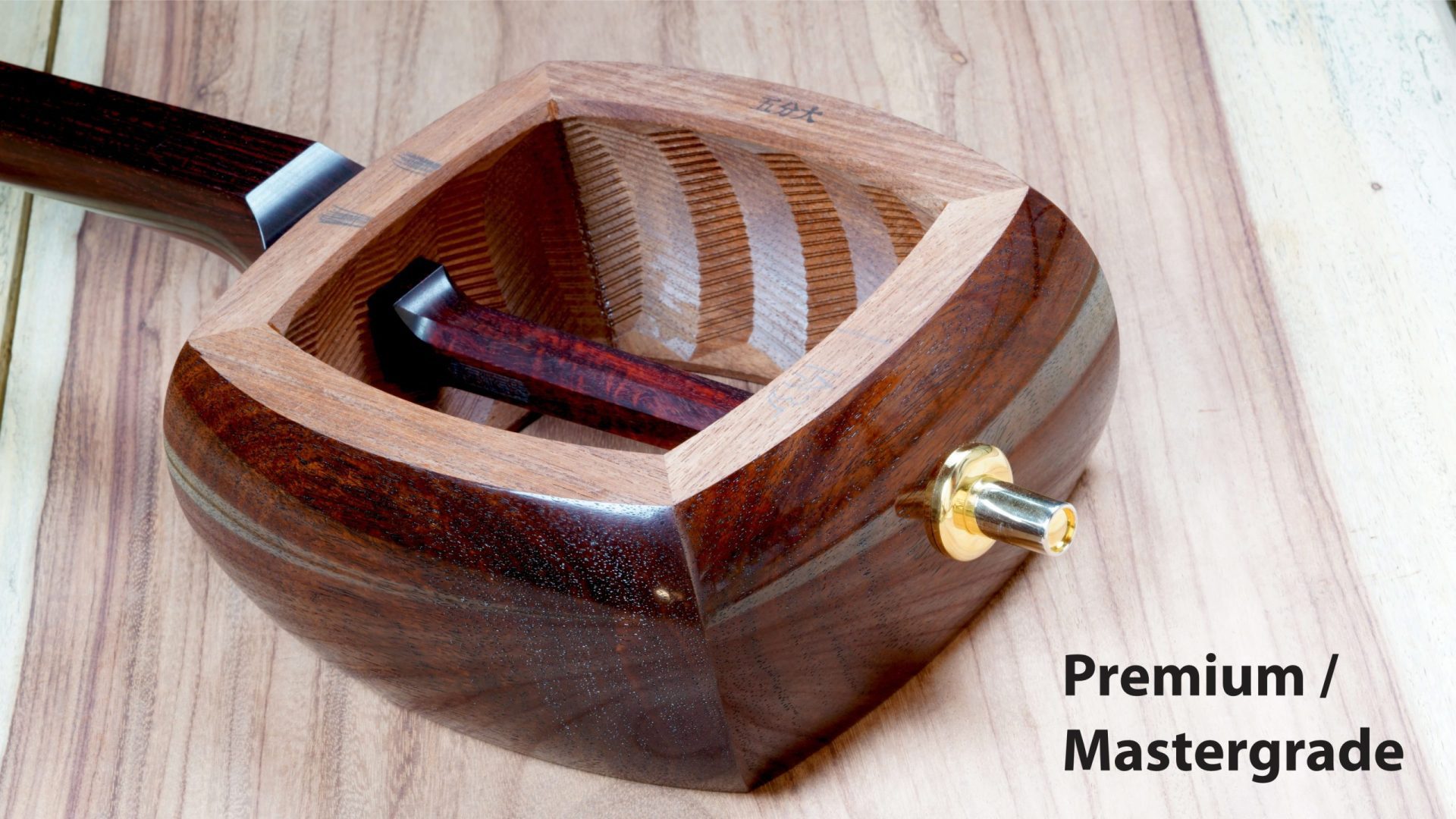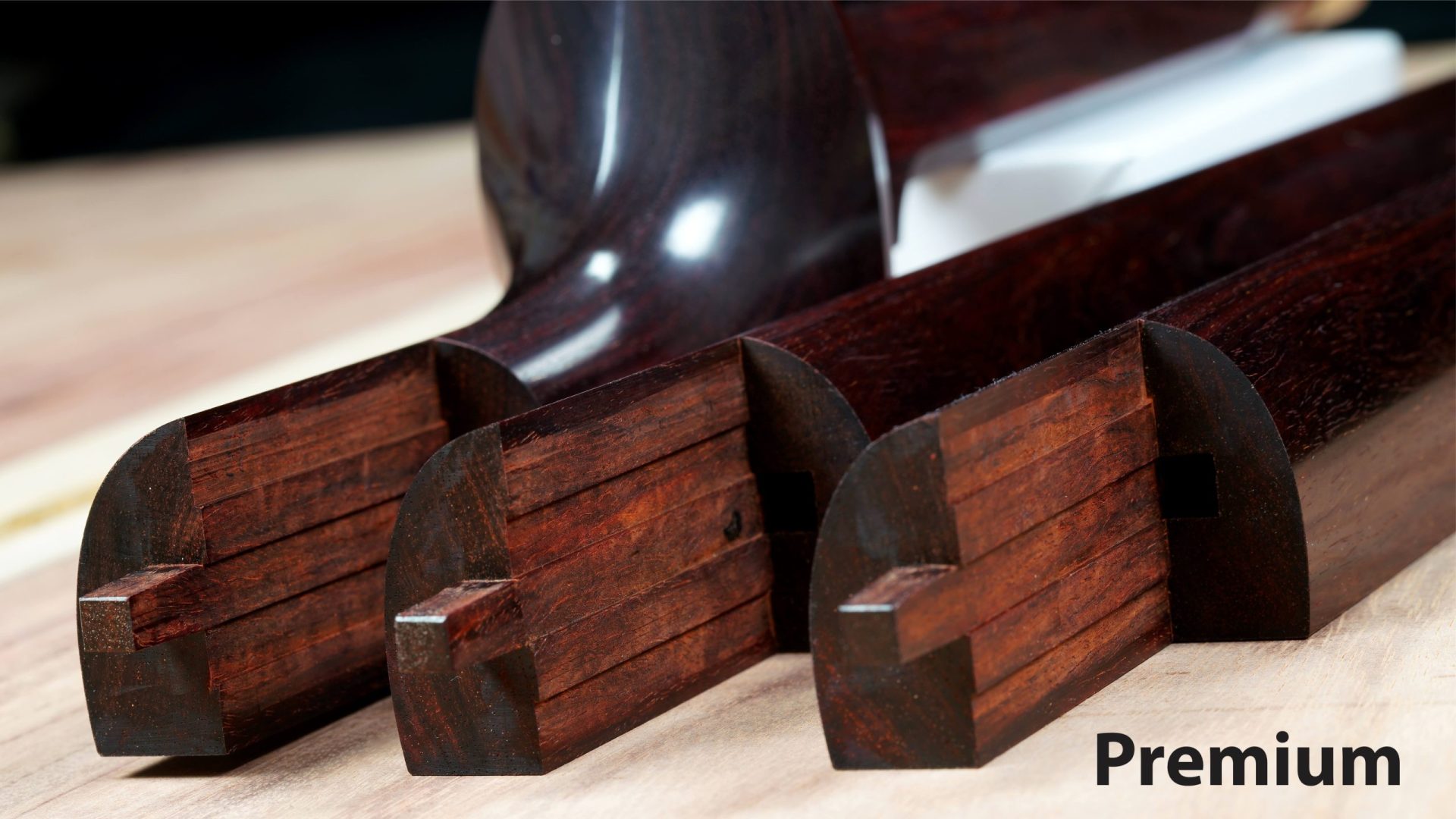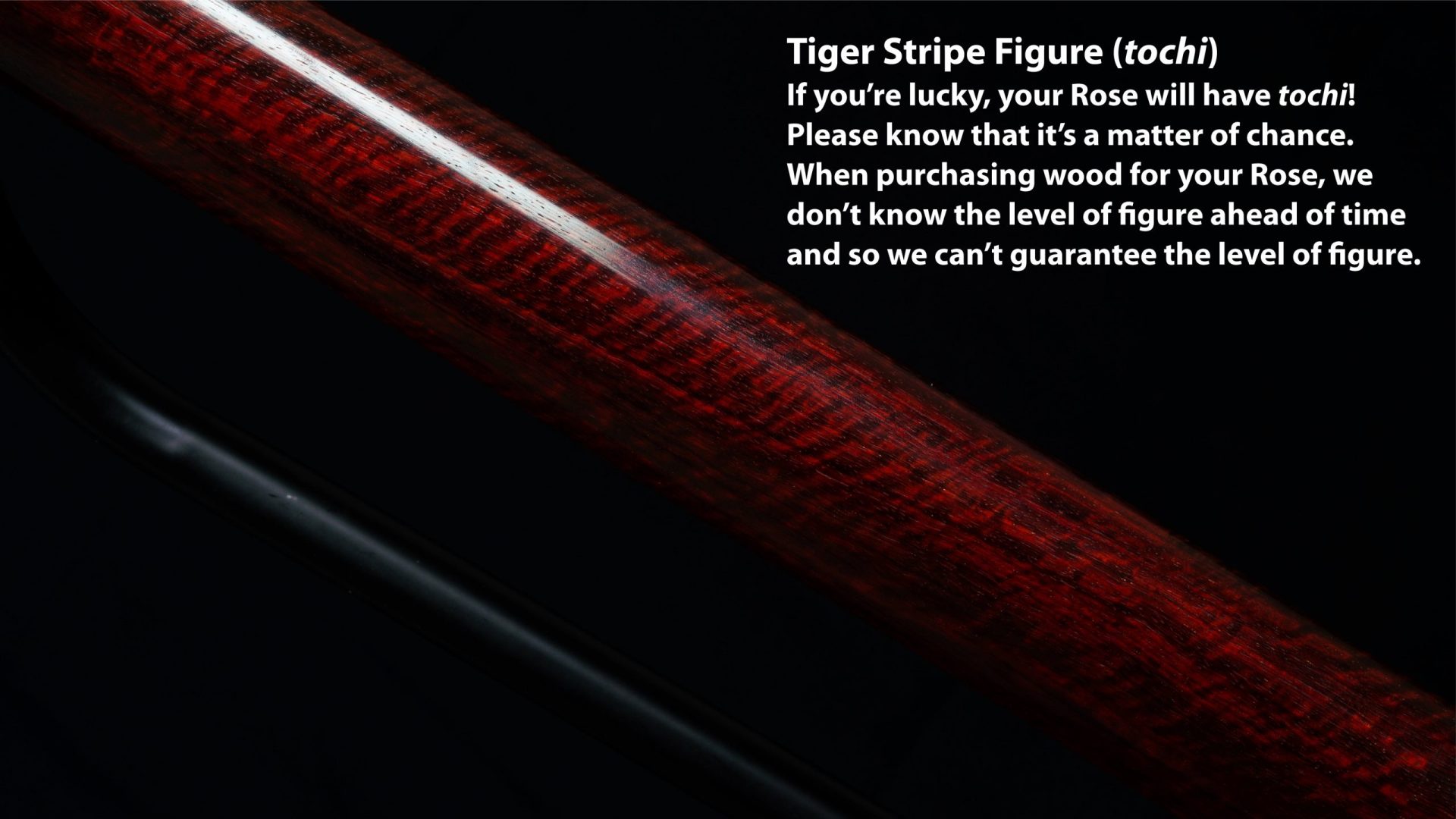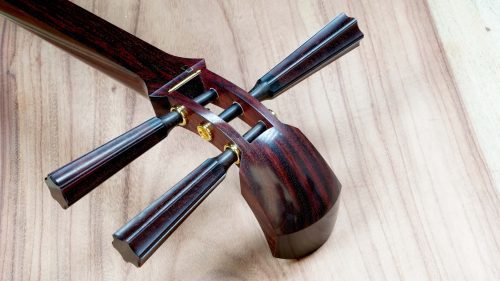Description
We introduce to you the Rose Shamisen. This gorgeous instrument has quite a history. Bachido’s partnership with Tokyo Wagakki only happened by an incredibly random chance of luck. Otaki-san (the president of Tokyo Wagakki) happened to be an long-time friend of the father of Yanaka-san, who is now my business partner but at the time was just a guy who invited me to his Ibaraki home back in 2013. And my connection with Yanaka-san was only made in thanks to Katoh-san, who introduced us after Yanaka-san took interest in my book sitting in Katoh san’s store. I’m always humbled by the timing of life, because Bachido and Tokyo Wagakki would never have connected if that sequence of connections didn’t occur in the right order, and without the support of Katoh-san who started the friendship.
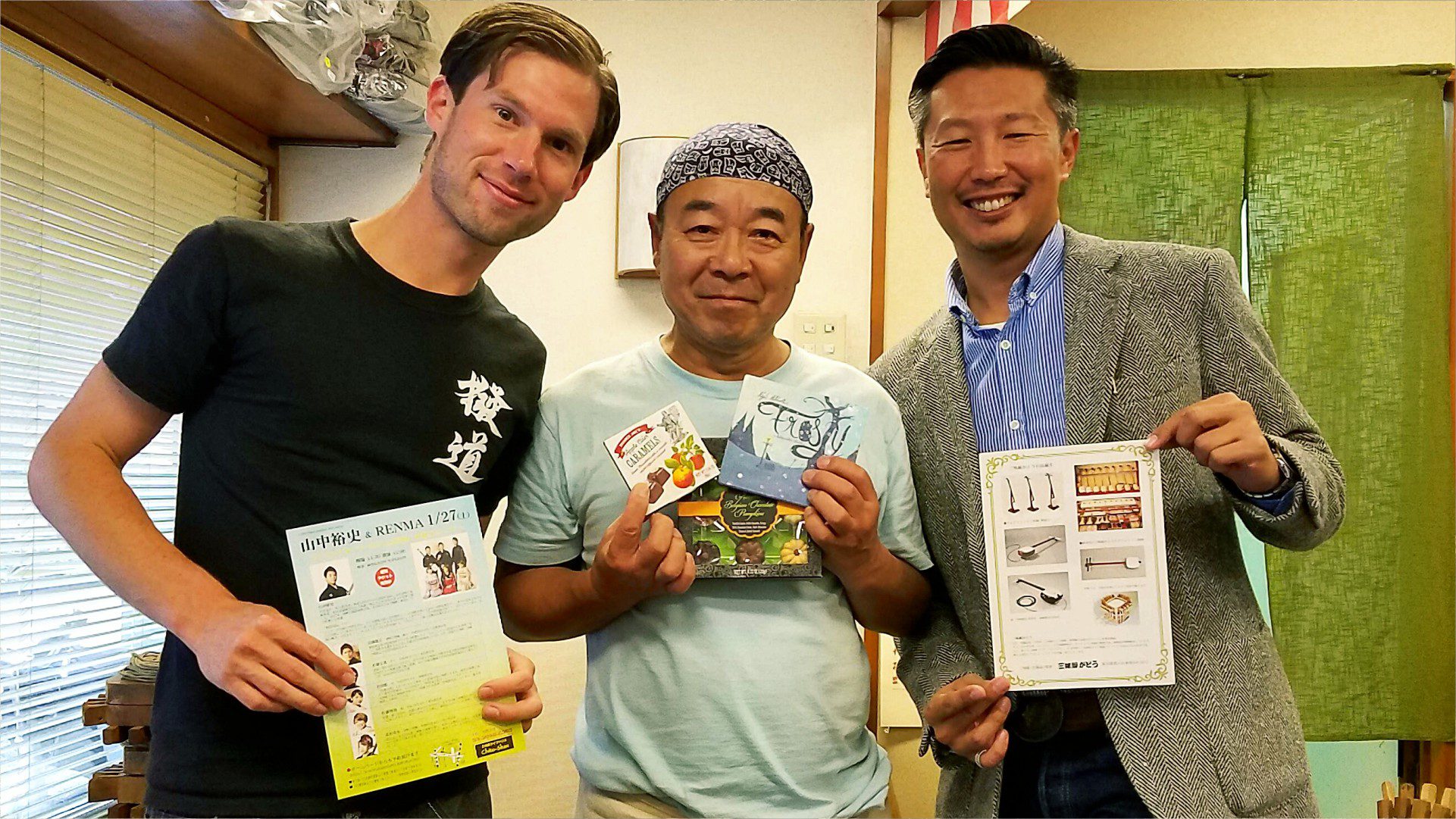
anaka-san (right) and I with Katoh-san (middle)
Because of that, I felt it was a special opportunity to create very unique high end shamisen. After all, you can find the usual Karin and Shitan shamisen at any shamisen shop in Japan (as well as in the Bachido Store), so instead we collaborated to create shamisen that couldn’t be found in any shamisen shop. The Sakura, Eclipse, Akatsuki, Raven, and Starling are all unique shamisen only available at Bachido, made by the top makers makers of shamisen in Japan.
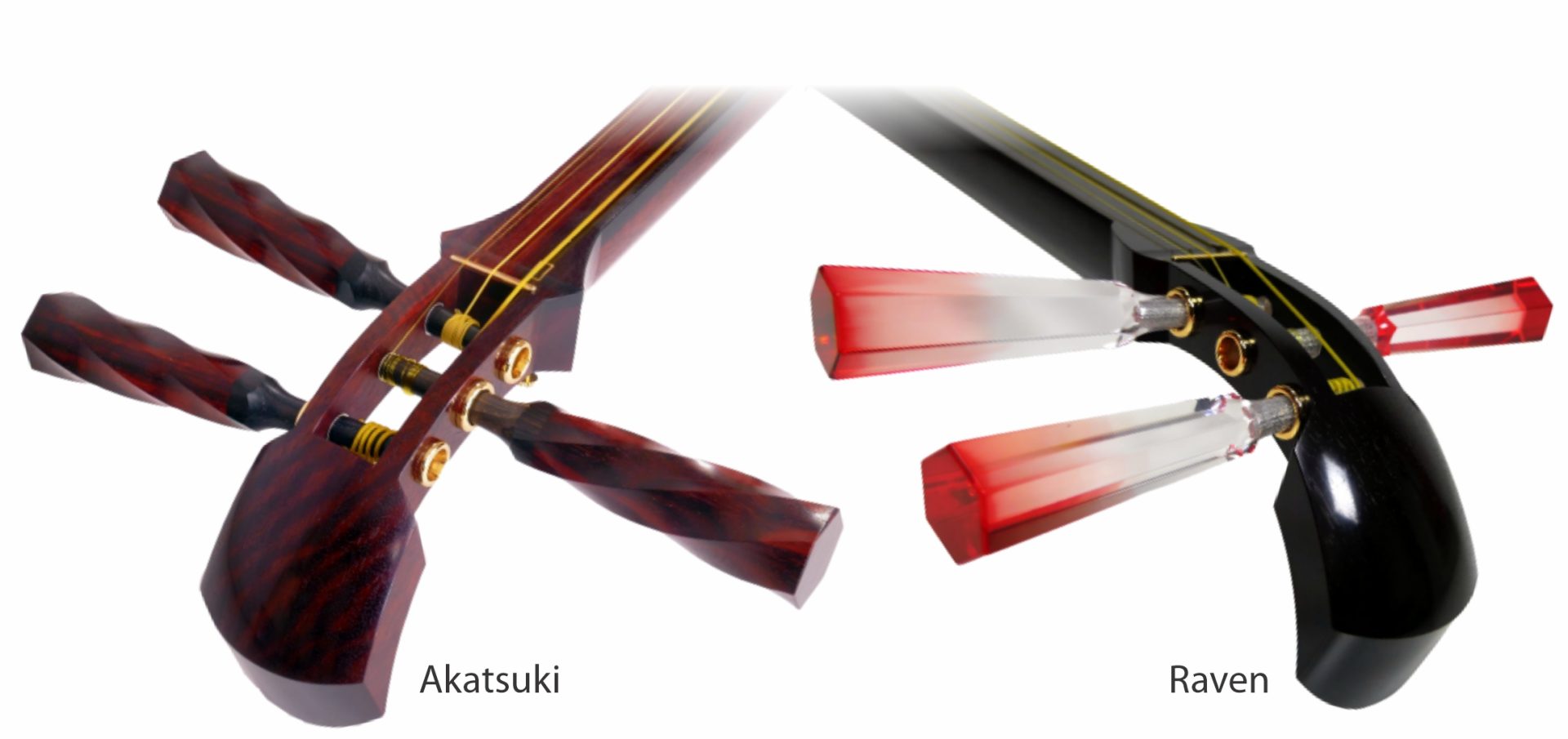
Recently, Yanaka-san (who’s father helped establish our relationship with Otaki-san) reminded me that although Tokyo Wagakki can create any shamisen with ease, kouki shamisen is their favorite, as kouki has the right balance of wood oil and hardness to make a mirror-like polish without any lacquer. So at last, it was finally time to make available Tokyo Wagakki’s specialty, the Rose!
Specifications
- Sao: Kouki
- Sao Size: Chuzao (28.5mm wide) or Futozao (30mm wide) – Mitsuori (three-piece neck)
- Mitsuori (three-piece neck) (Kinbozo option available)
- Itomaki: Soragara Mentori (star shape with edges recessed). Kouki jointed to black ebony
- Skin: Hibiki (Black/White Synthetic) or Vintage Tone (Natural)
- Dou: Karin – Size 5 (Ayasugi option available)
- Hardware: Azuma Sawari, Rindo, Zagane, and Kamigoma
- Accessories not included
Mindful Use of Kouki
As you might’ve heard, kouki wood is scarce, so it’s important to know that the Rose is not made with new kouki. Basically, through a long chain of connections, we know someone who horded seasoned kouki wood after he retired from being a shamisen maker in the early 2000s. Kouki wood purchased in the early ’90s was just sitting in a secret warehouse collecting 30 years of dust! (no joke) So, after some discussions, he allowed us to use his remaining supply kouki for our shamisen.
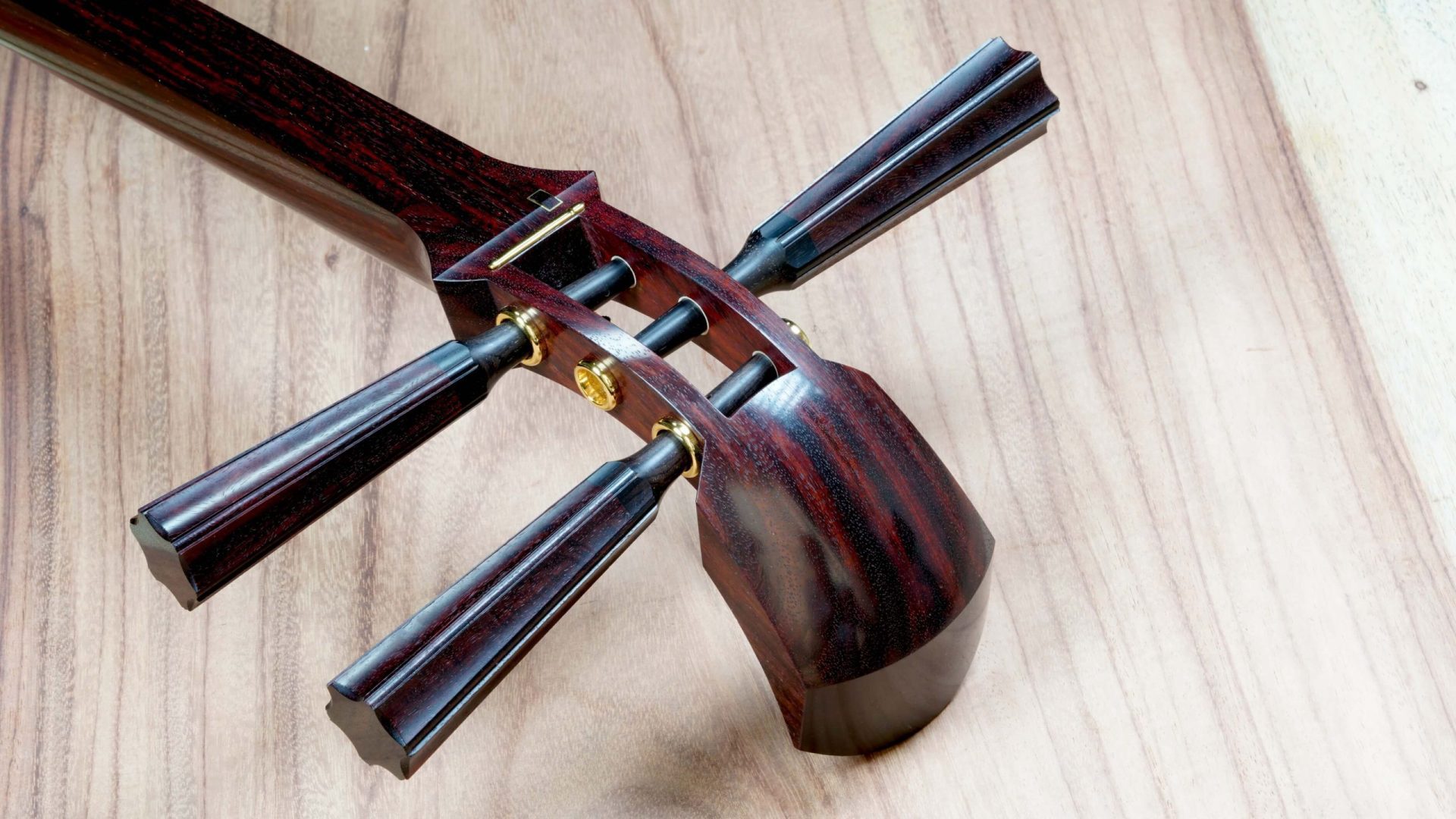
Releasing the Bling
This is the first “standard” shamisen we’ve released from Tokyo Wagakki. When I say standard, I mean unlike the Akatsuki or Raven, you can find kouki shamisen like this at shamisen shops in Japan. Thus, we’ve decided to finally offer the fancy aesthetic options that usually come with high end shamisen – the intricate herring bone carving inside the dou called ayasugi, and gold fittings in the joints, called kinbozo.

You might ask, “Kyle, if the other shamisen like Akatsuki and Raven are high end, why didn’t you offer ayasugi and kinbozo for those as well?” Well, for decades there has been a myth that ayasugi and kinbozo increases a shamisen’s acoustic quality, a myth I was always skeptical of. Traditionally, those features were only added to shamisen priced around $10,000 to $30,000 or higher, just to give the full masterpiece treatment. At some point in history, I suspect some makers wanted to sell more of their higher-priced wares, and so told players that gold fittings and carved pattern greatly improves sound quality. That myth spread to this day, and with the power of the internet, so many are led to believe that spending thousands more on these features resulted in better tone. Well, my partners and I don’t believe that, and it didn’t feel right to take advantage of this myth by offering it. Thus, we never offered it before.
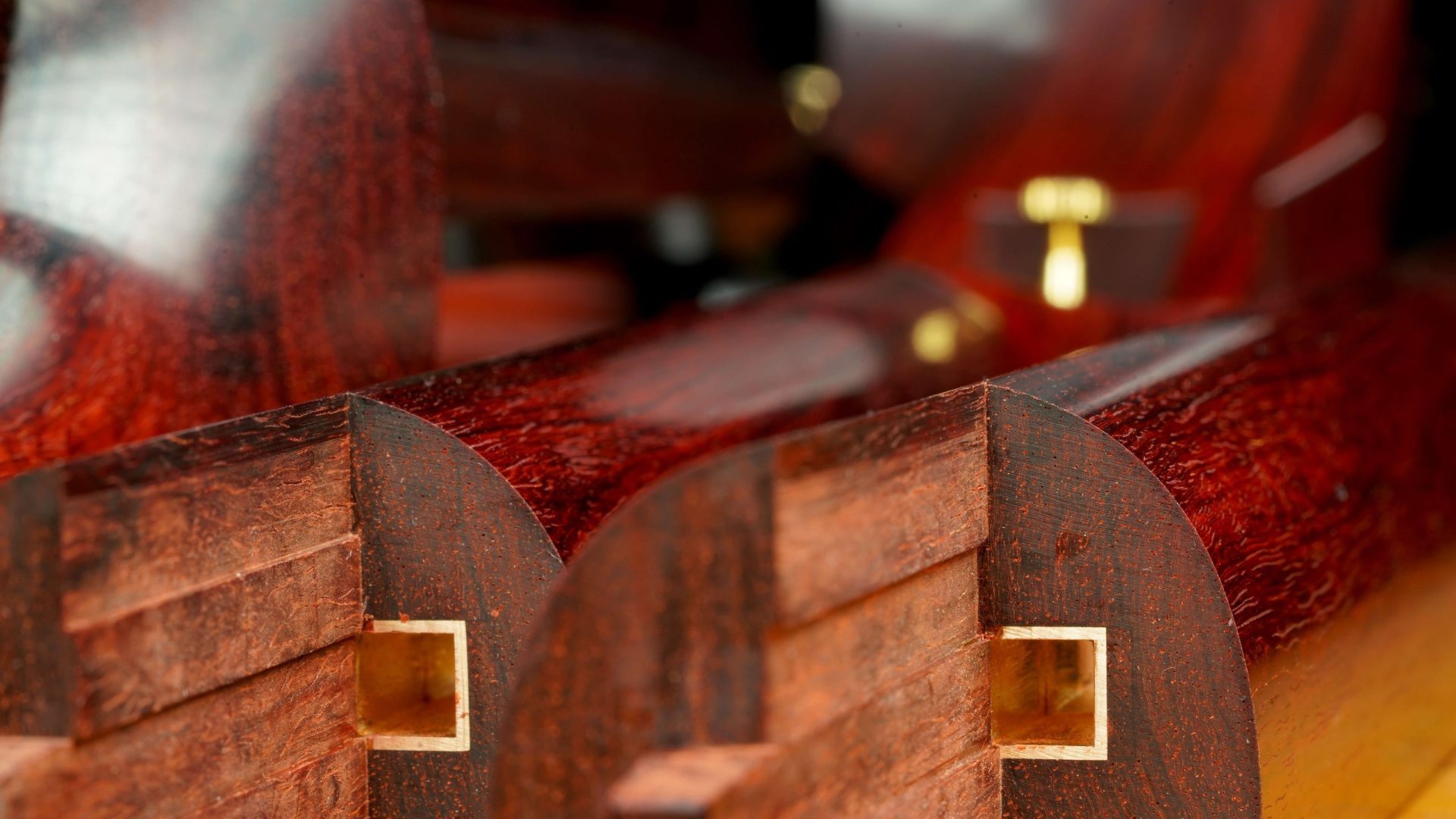
However, I recently made a ayasugi/kinbozo sound test which compares identical Roses with and without these features, in order to have an objective comparison. I believe it proves that these features do not improve sound quality.
In fact, it ended up proving that simple changes like moving the koma by 1mm will affect the tone much more than anything these features can provide. What it does prove is the traditional reason for the features – it looks incredibly gorgeous. In any case, now that a sound test is available so people can hear it’s acoustic effect (or lack thereof), I feel better about offering these aesthetic options for the right reasons. If one has an eye for beauty, then ayasugi and kinbozo will give you the ultimate visual experience in shamisen luxury!
Diamonds Among Gems
The figure and color of each kouki piece varies considerably. We discovered this when crafting the first three Roses. The first had great tiger stripe pattern; the second had tiger stripe pattern with surprisingly dark color; the third had very little tiger stripe pattern but had an incredibly bright and vibrant red color. Each piece was very unique. Because of the kouki wood in his warehouse is all rough lumber, the level of figure doesn’t appear until it’s been shaped. Unfortunately, it’s not possible to shape the rough lumber before purchasing it, so we can’t know how much figure each sao will have. The important thing to know is that kouki from the 90s is much higher grade than the standard kouki available these days, so no matter what, you will get a stunning kouki shamisen. And if you’re lucky, you’ll have a sao with cascading ripples of tiger stripe figure which would normally sell for a much higher price!
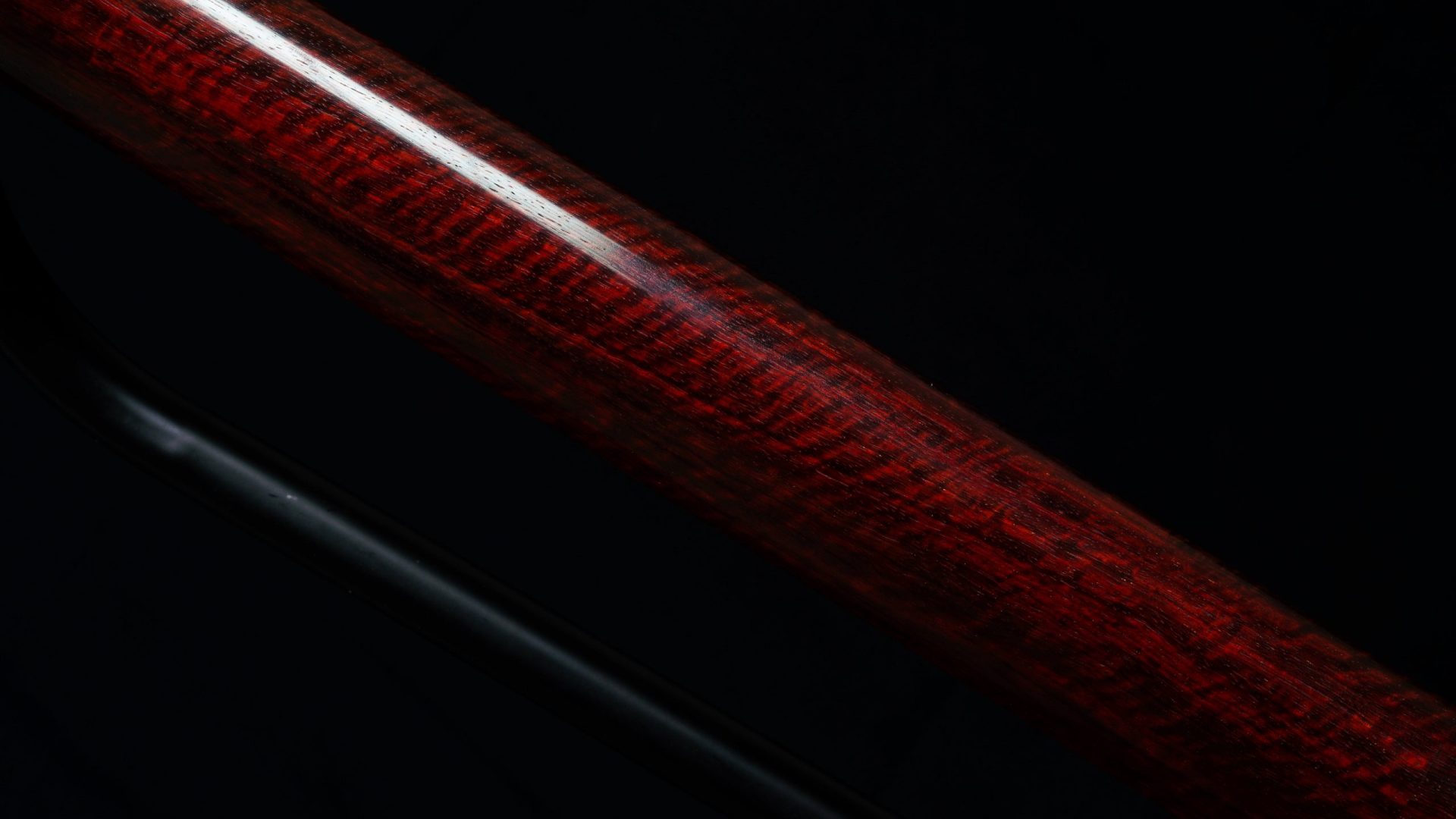
Color Darkens With Age
One very important fact to know about kouki is that no matter how bright red it is when brand new, kouki always darkens with age as it’s exposed to sunlight and oxidization. Almost all wood darkens with age, but even more significantly with kouki. Please keep this in mind as you imagine your future life with the Rose. :-)

Chibukuro Options
The Chibukuro is the area where the sao (neck) connects into the tenjin (headpiece). The Standard Chibukuro has a convex curve. In the past, this convex curve possibly provided extra strength to the joint. Nowadays, the joint is so strong, the extra wood doesn’t serve much purpose. In fact, the extra mass can look and feel cumbersome, especially when playing position ‘1’. For those who prefer a slender trimmed look and feel, the Chibukuro can be trimmed into a fan shape which we call the Ogi Cut.

Two Sao Style Options
‘U’ Style
 This is the standard shape of the sao. You will find this style on almost all shamisen. The base of the sao has a broader curve, so it fits comfortably in most hands. Because it can feel thick for some, we recommend a Chuzao size (28.5mm wide) for this style.
This is the standard shape of the sao. You will find this style on almost all shamisen. The base of the sao has a broader curve, so it fits comfortably in most hands. Because it can feel thick for some, we recommend a Chuzao size (28.5mm wide) for this style.
‘V’ Style
 If you’re like me, you’ll notice the base of a futozao (30mm wide) can feel too thick. Even though the wide fingerboard is easy to play, the thick shape feels unnecessarily big. Because of this, the ‘V’ Style sao is made!
If you’re like me, you’ll notice the base of a futozao (30mm wide) can feel too thick. Even though the wide fingerboard is easy to play, the thick shape feels unnecessarily big. Because of this, the ‘V’ Style sao is made!
This base of the ‘V’ Style sao is greatly reduced, making the sao feel much thinner while still providing a full futozao width (30mm). The careful shaping of the sao brings out a subtle edge along the base. This is a very unique style, ideal for experienced players who want to fine-tune their playing experience.
The Three Roses
These are the three styles of Rose Shamisen available.
Standard: Maruuchi Dou (regular dou without ayasugi), Standard Chibukuro, U style sao.
Deluxe: Ayasugi Dou, Ogi Cut Chibukuro, V style sao.
Mastergrade: Ayasugi Dou, Kinbozo (gold fittings in sao), Ogi Cut Chibukuro, V style sao.
Special Requests: If you have a special request (for example, if you would like would Ogi Cut on the Standard model, or ‘U’ style sao on the Deluxe model, or would like different style of itomaki, etc) please email me at kyle (at) bachido (dot) com and together we can create your perfect Rose!
Special Bonus!
To help you get started with your brand-new Rose Shamisen, I am including several learning materials for free!
- Bachido Shamisen Crash Course
- Premium Shamisen Course: Sakura
- Premium Shamisen Course: Ringo Bushi
- Premium Shamisen Course: Yasaburo Bushi
- Premium Shamisen Course: Tosa no Sunayama
Note: A Bachido membership (free) is required to access the courses.
(Note: Each shamisen is built per order. Please allow nine to eleven weeks for construction, and feel free to contact store (at) bachido (dot) com if you have questions :-) )


